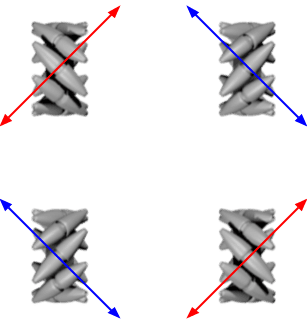Vehicles with Mecanum wheels can move in all directions, using less time and space. The operation of these wheels is this post’s subject.
How do Mecanum wheels work?
Were invented in 1973, by the Swedish engineer Bengt Erland Ilon, when he worked at company Mecanum AB. Consist on wheels with rollers linked on both sides. These rollers are positioned 45º in relation to wheel circumference plane.

When the wheel moves normally, it’s created a 45º driving force in relation to rolling direction, thanks to the rollers.


For vehicle’s motion be smooth, rollers have reduced diameter on extremities. Without this modification, the movement would be jerky.
Executing movements

- To move forward, wheels must roll to the same direction, x components of driving force cancel each other and y components add up. To go backward, just change wheels’ rolling direction.
- How to move sideways? 2 wheels with same orientation must spin in a direction and other two on opposite direction. The y components cancel each other and x add up.
- To move on diagonal, just 2 wheels of same orientation move.
- Can make curves by moving two wheels on the same side.
- Spinning wheels from one side in one direction and others in opposite direction, make the vehicle rotates.
- If front or back wheels rotate in opposite directions, the car will pivot sideways.

Limitations of Mecanum wheels
- Mecanum wheels are more expensive than the common ones.
- They are suitable only in flat surfaces.
- Have less speed and efficiency than common wheels.
- Have more vibration, due to sequencial contact of rollers to ground.



